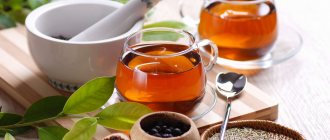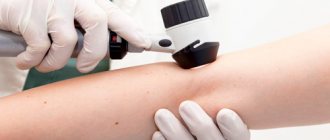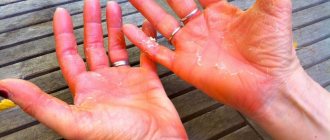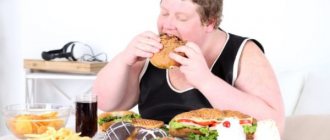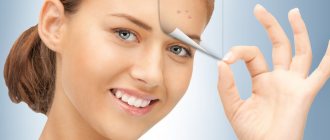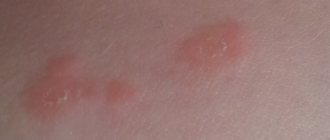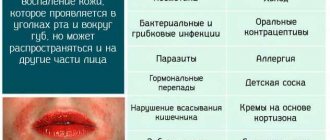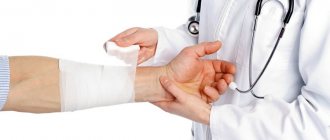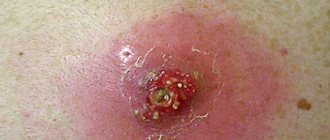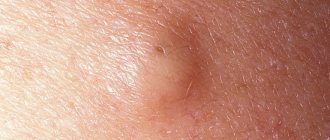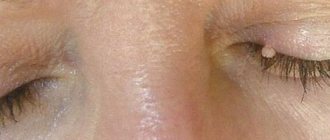Ointments against lichen
Many types of ointments have been developed for the treatment of microsporia and human trichophytosis. They differ in composition, method of action on the parasite and healing rate.
The ointment is thicker than other drugs. It lasts longer on the treated area, penetrates into the deeper layers of the skin, and therefore fights mycosis better.
An alcohol solution of iodine is used in combination with ointment. It has a detrimental effect on fungi and bacteria, disinfects the affected area of the skin:
- Iodine is used in the morning, ointment at night.
- 20% sulfur ointment. The sulfur contained in the preparation dries out the ulcers. Kills the causative agent of lichen and accumulated bacteria.
- Salicylic. Reduces inflammation, kills parasitic mycoses. The surface treated with ointment must be covered with a napkin. It is strictly forbidden to treat wounds on the face.
- Sulfur-tar. Kills the pathogen and disinfects the surface. The product is used to treat the affected area and adjacent tissues. If the focus of inflammation is strong, then apply a bandage.
- Lamisil. Inhibits the reproduction of the parasite and kills it.
- Mikospor. Destroys microsporid cells. The drug is applied to the wound in a thin layer.
How to get rid of white spots after ringworm
After the pathogen has completely disappeared, noticeable white spots remain on the skin. The main way to combat this ugly phenomenon is protection from sunlight. If a person regularly hides problem areas of the body from the sun, the work of epithelial cells will be restored faster and the required amount of pigments will accumulate.
For external treatment, you can use ointments of plant origin - “Vitilen”, “Vitix”, “Vitasan”.
Treatment of lichen is a rather labor-intensive process, so before purchasing a drug you should definitely consult a dermatologist. The doctor will determine the type of pathogen and prescribe the correct therapy.
Causes of disease in children
The lipophilic fungus that causes lichen is always found on the human body. But under favorable conditions it begins to reproduce at high speed. For this reason, spots with uneven edges appear on the human body; they can be brown, pink or light yellow.
The fungus turns into a pathogenic microflora under the influence of external negative factors. In a child, the appearance of pigmentation can be caused by the following factors:
- avitaminosis;
- poor quality nutrition;
- stress;
- excess weight;
- throat and nose infections;
- mental stress;
- failure to comply with personal hygiene rules;
- diabetes mellitus of any type;
- VSD;
- increased sweating;
- Itsenko-Cushing syndrome;
- malfunction of the sebaceous glands;
- oily skin;
- heredity;
- malignant tumors;
- constant physical activity.
Treatment recommendations
So how to get rid of lichen? The effectiveness of therapy lies not only in the use of medications and shampoos, but also in other equally important methods.
- Avoiding stressful situations and getting adequate sleep (at least 8 hours a day).
- Personal hygiene. Daily warm shower.
- Refusal of decorative cosmetics and scented cosmetics.
- Clothes should only be made of cotton.
- Refusal of solariums and sunbathing.
Nutrition is also important in this case. The patient’s diet should include only healthy food, rich in vitamins and beneficial microelements - vegetables, fruits (except citrus fruits), cereals, meat, herbs, dairy products.
Symptoms of pityriasis versicolor in children
The appearance of oval or round spots of pink-brown color is the first sign of pityriasis versicolor. Characteristic lesions appear predominantly in the upper part of the body, affecting:
- neck;
- stomach;
- chest;
- shoulder blade area;
- shoulders;
- hands.
Much less often, pigmented formations are found in the groin area, armpits, face and head. After 3-5 days they merge with each other, forming large colored spots on the skin. Other manifestations of lichen include:
- moderate itching;
- excessive sweating;
- peeling of the skin.
The disease is practically not contagious, so patients are not isolated when it is diagnosed. Very rarely, pityriasis versicolor occurs in children under 10 years of age, but with frequent smearing of the body with fatty oils, even newborns are diagnosed with keratomycosis. It manifests itself as peeling and the formation of multi-colored spots. They are localized on the chest, in the axillary area, back, arms and back of the head.
In adolescents, lichen occurs due to hormonal changes and decreased body reactivity. Because of this, the skin becomes more sensitive to moisture and heat, which creates conditions for the proliferation of fungal flora. In children, pityriasis versicolor occurs without significant differences from adults. They very rarely report subjective sensations - severe itching, pain or burning. Their appearance indicates infection with pathogenic bacteria. Penetration of microbes into the skin is also indicated by purulent inflammation and increased temperature.
Traditional methods of treatment
Recipes of alternative medicine will also help to cope with white spots in humans. Traditional healers often recommend using birch tar for lichen. The drug has strong antifungal and anti-inflammatory properties, relieves itching and irritation. This safe remedy can be used to combat ringworm in children and pregnant women.
To get rid of white spots, compresses are prepared from birch tar and fish oil. The drugs are mixed in equal parts and applied to a gauze pad. The bandage is fixed on the affected area and kept for 2 hours. Then remove, wash the lichen with water and lubricate with zinc ointment.
Rubbing the affected area and the skin around it with raisins has a good effect. It turns out that the sweet product contains substances that kill the fungus. This remedy is best used to treat the face, neck and skin on the chest.
Garlic and lemon will help you cope with white lichen on your back. The hot vegetable is peeled, grated on a fine grater, and mixed with the same amount of chopped lemon pulp. The resulting mixture is applied to gauze and applied to the skin. After two hours, the product is washed off and the dermis is lubricated with antimycotic ointment.
Prevention and possible complications
Over time, the lesions on the skin increase in size, causing moderate itching. But most often, pityriasis versicolor does not cause negative consequences and does not impair the quality of life. When using antimycotic ointments and tablets, the symptoms of the disease disappear within 14-20 days. And only if the manifestations of keratomycosis are ignored, the fungus provokes seborrheic dermatitis or folliculitis.
To prevent re-infection of the skin with a fungal infection and the appearance of lichen, you must:
- Be examined by a dermatologist 1-2 times a year;
- eat a balanced diet;
- take vitamin and mineral complexes;
- protect the child from mental stress;
- promptly treat ulcers and skin lesions with antiseptics;
- limit contact with stray cats and dogs.
Lichen versicolor is a chronic disease that worsens with decreased immunity, hyperhidrosis and hormonal imbalances. Elimination of predisposing factors, compliance with sanitary and hygienic rules and recommendations of a dermatologist reduce the likelihood of exacerbations by 2-3 times.
Aids
The use of combination therapy will help to cope with the disease faster. Treatment of pityriasis versicolor is carried out with auxiliary drugs. Salicylic alcohol, which is used in its pure form to wipe the skin, works well against fungus. This method of treatment will help disinfect the source of inflammation, and also remove scales with spores of microorganisms. To combat ringworm, 1% salicylic alcohol is used. This remedy is convenient because it can be used for treatment at home.
The most popular rubs are Tsindol and Vidal's milk. The products are made on an alcohol basis and may include additional ingredients: zinc, glycerin, water, talc. Medicines kill infection on the skin by acting directly on the pathogenic microorganism.
Boric acid
Easily and quickly copes with foci of infection, killing the fungus and relieving inflammation of the skin. An economical way to deal with ringworm.
The recipe for preparing a medicinal solution from boric acid is simple:
- Buy boron powder at the pharmacy;
- Pour a sachet (10 g) with a glass of boiled water, mixing the resulting mixture thoroughly.
- The dissolved acid is used to rub the skin.
This should be done regularly for 5 to 10 days.
Boric acid can be purchased at a pharmacy
Phytotherapy
You can successfully treat lichen versicolor at home using folk remedies. The most commonly used medicinal products are tar soap and birch tar; tinctures of celandine, calendula and lemon balm for external use are excellent.
One of the most popular folk remedies is hellebore water. It’s easy to prepare the tincture: you need hellebore root
Care must be taken when collecting as the plant is poisonous. Hellebore is also sold as an antiseptic in pharmacies.
The medicinal tincture is used for 14 days when treating the skin.
When treating pityriasis versicolor, you can use the following remedies:
- finely chop freshly picked sorrel and carefully treat the inflammation areas with the resulting mixture two to three times a day;
- regular ash kills pathogenic microorganisms on the skin;
- wipe the skin with milkweed tincture, make sure that no allergic reaction occurs;
- lilac solution: to prepare the tincture, 200 grams of dried flowers must be poured with alcohol, left for 7-10 days, and used to treat sore skin.
The fight against pityriasis versicolor can last a long time
It is important to be patient and follow all the doctor’s instructions - then you will succeed and restore the beauty and health of your skin.
Treatment of versicolor dermatitis in children
Treat pityriasis versicolor
Drug therapy
Treatment of a child with medications is based on taking antimycotic drugs. They do not affect liver function and very rarely cause side effects. The most common and effective:
- Bifosin is a fungicide that is available in the form of a spray, ointment and solution. Has the ability to destroy fungus. Apply to the affected areas of the skin 1-2 times a day, the course of treatment is no more than three weeks.
- Terbix - cream quickly copes with fungus on the skin; children under 12 years of age are recommended to use it no more than 2 times a day for two weeks.
- Ketoconazole - has an antifungal effect and relieves itching. Apply to inflamed skin and 2-3 cm of healthy skin in the morning and evening.
- Exoderil also quickly kills the fungus, one application per day is enough.
Important! All preparations are applied to clean skin.
If treatment did not begin immediately and the disease began to progress, more powerful drugs should be taken:
- Rumicosis - broad-spectrum anti-fungal tablets; children are prescribed 100 mg of the drug per day for a week.
- Itrazole - for lichen versicolor, 200 mg of medication per day is prescribed.
- Mycozoral - destroys the fungus at the cellular level. Children whose weight does not exceed 30 kg are prescribed 1 tablet per day for a week. If no positive effect is observed, the course is extended for another week, but with a double dosage.
Dietary recommendations
Pathogenic microorganisms develop only with weakened immunity. Therefore, it is recommended to create a menu rich in vitamins for your child:
- meat (low-fat varieties);
- honey (check for allergies);
- vegetables;
- fruits (preferably red);
- greenery;
- low-fat dairy products;
- berries.
In order not to develop favorable microflora for the fungus, you should avoid the following products during therapy:
- sweets and baked goods;
- meat broths;
- fatty fish and meats;
- fast food;
- smoked meats;
- conservation.
Important! It is recommended to avoid sweet drinks and strong coffee. It is advisable to drink clean water, dried fruit compotes, juices, milk and green tea.
Traditional methods
Important! Before using traditional recipes, consult your doctor.
Ringworm is treated with products that contain herbs that can fight the fungus and quickly restore the skin.
The following recipes are used:
- St. John's wort based ointment. Add half a spoonful of dry St. John's wort to a tablespoon of baby cream. The product is applied to areas of inflammation every 4–5 hours until complete recovery.
- Ointment based on sorrel. Mix crushed sorrel with cream (preferably homemade) and add 3-4 drops of any essential oil to the mixture. The product is applied to the stains, wrapped in polyethylene and left for 1.5-2 hours. The procedure is carried out 2-3 times a day for 15 days.
Treatment of white lichen
With timely diagnosis, pityriasis alba is easily treatable and does not cause complications. The following symptoms are reasons to consult a doctor:
- increase in the area of the lesion;
- localization of spots on areas of the body that are easily exposed to ultraviolet rays;
- there are accompanying symptoms (itching, peeling, etc.);
- wound infection.
Depending on the stage of the disease, the doctor selects an individual treatment regimen.
Drug effects
External agents based on corticosteroids (ointments, gels) are used as medicinal therapy.
They help relieve discomfort and speed up the skin regeneration process. Due to the fact that these drugs have a number of contraindications and side effects, they are prescribed exclusively by the attending physician. Since patients often develop atopic dermatitis with lichen alba, doctors recommend using external creams based on calcipotriol and pimecrolimus. The most common and effective drug is hydrocortisone ointment 1%.
Since lichen alba appears against a background of weakened immunity or after nervous tension, patients are prescribed mild sedatives and vitamin complexes.
It is very important to follow some rules during treatment:
- use warm water when washing;
- give preference to cosmetics and neutral acidity;
- thoroughly moisturize the affected area of the skin (greasy baby creams are suitable);
- When exposed to sunlight for a long time, apply protective agents to the skin.
The duration of the course of therapy depends on the degree of damage by fungal flora, on average it is 2 weeks.
Physiotherapy
Phototherapy sessions will help to cope with pityriasis alba. The affected areas of the patient's skin are exposed to light rays of a certain frequency.
They help stop the proliferation of fungi and speed up the healing process. Physiotherapy is carried out in combination with drug therapy. Phototherapy is often prescribed to patients with a chronic form of the disease.
Treatment with folk remedies
Traditional medicine does not always help to cope with this disease, but in combination with the main treatment regimen it brings positive results. Among the effective means are:
- rubbing the affected areas with fresh aloe juice;
- lotions from a decoction of medicinal plants (tansy, St. John's wort and celandine);
- applying steamed raisins to the injection site.
Before starting self-medication, you should consult a doctor, this will reduce the chances of developing complications.
How to treat pityriasis alba in children
Caring for a child's skin requires special attention from parents.
For lichen alba, avoid products that dry the skin; when carrying out water procedures, the water should be warm, not hot.
Among the medications, the ointments most often prescribed are Taclolimus, Calutriol, etc.
They help stop the proliferation of fungal flora, prevent the progression of the disease and its transition to atopic dermatitis.
Principles of treatment of lichen in childhood
Treatment of childhood lichen consists of a number of complex measures, which include therapeutic treatment, the effect of systemic and local disinfectants on the skin, and the establishment of quarantine in children's institutions and schools.
Therapeutic treatment is determined only by the doctor and directly depends on the type and degree of manifestation. There are non-contagious forms, but if a type dangerous for spread is present, the child is isolated from communication with other children until complete recovery occurs. Photos of various manifestations of lichen can be viewed on the Internet. Ringworm is considered cured if the test for the presence of fungi or viruses shows a negative result three times.
Fungal forms begin to be treated by removing hair from the affected area, then the doctor determines the type of immunomodulatory therapy and prescribes a vitamin complex. Externally, they fight the fungus with damaging ointments, and take systemic antifungal agents internally.
Viral lichens are cured with the use of painkillers, analgesics, local and general antiviral agents. It is recommended to use brilliant green or any other disinfectants to eliminate purulent inflammatory processes.
Herpes zoster or herpes responds well to treatment with physiotherapeutic agents (electrophoresis, ultrasound, magnetic field, Sollux, UV irradiation). If the child has severe pain, a blockade with novocaine is prescribed or reflexology is performed.
It is very important that the child obeys the rules of hygiene during the period of illness. Frequent and regular changes of clothing, bed linen and underwear are provided; all washed and dried items must be ironed
Brushes, combs, hairpins and other personal items must be constantly treated with disinfectants.
Prevention of ringworm
For the purpose of prevention, it is necessary to observe hygiene measures and promptly treat diseases of the gastrointestinal tract, endocrine and nervous systems. Patients who have once had lichen should refrain from visiting public swimming pools, saunas and baths. It is also better for them not to travel to hot countries, since the climate can provoke illness.
If there is a sick person in the family, you need to protect other family members from infection. To do this, the patient’s bed linen and underwear are boiled in a soda-soap solution. You can simply wash your clothes in an automatic machine at high temperatures, and then iron them with a hot iron and steam.
Moderate tanning helps protect against recurrences of lichen. In direct sunlight, the fungus dies. Also, for prevention in the spring, you need to use Ketoconazole shampoo. It is enough to apply it once a month to damp skin and hold for 5 minutes, then rinse with warm water.
Preventive actions
It should be borne in mind that the most contagious diseases are ringworm and shingles.
Therefore, when diagnosing these diseases, it is very important to prevent them from infecting other family members.
If you have ringworm, the affected areas should be covered with a band-aid to prevent fungal spores and skin flakes from spreading throughout the house. If the lichen is on the scalp, then the child needs to wear a bandana. It is necessary to carry out wet cleaning daily, adding disinfectants to the water. Bedding and towels should be washed at high temperatures and be sure to iron. Hair accessories and combs should be disinfected and thrown away after treatment.
A child who has recovered from the disease can begin going to a child care facility only after an analysis shows that he is not dangerous to others and the lichen virus has been overcome. If a child becomes infected from a pet, the animal must be taken to a veterinarian, where it will receive appropriate treatment.
In order not to become infected with shingles, the baby needs to be taught to wash his hands after a walk, not allow him to pet stray animals, and make sure that the baby’s immunity does not weaken. Physical activity, frequent walks in the fresh air, hardening and proper nutrition will help him maintain his immune system in order.
Prevention
There are no exact preventive measures that will help prevent the appearance of white lichen. Below we will give some tips that will help eliminate the factors that provoke the occurrence and development of lichen simplex.
- It is necessary to avoid the appearance of cuts, abrasions and wounds on the skin. If you cannot avoid their appearance, then treat the affected area with an antiseptic. It is recommended to initially seal the wound with a band-aid for a certain period to prevent pathogenic bacteria, fungi and viruses from getting into it.
- Follow the rules of personal hygiene. Use only your own bath accessories and comb. You should not wear other people's hats and clothes.
- You should not communicate with an infected person unless absolutely necessary.
- Boost your immunity. Eat fresh fruits and vegetables, take vitamins, walk in the fresh air. The absence of bad habits, a healthy lifestyle and sports will help your body fight infection.
- If possible, avoid overwork, hypothermia and stressful situations.
- The body needs to be hardened so that it is more resistant to external influences.
- The diet must include foods that have an antiviral effect: lemon, beets, carrots, garlic and onions. When cooking, use spices with a strong aroma: coriander, cilantro, marjoram.
- Among folk remedies, decoctions of antiviral effects from eucalyptus leaves, black poplar buds, thyme, tansy, chamomile, galangal rhizomes, juniper fruits, medicinal lemon balm, oregano and birch leaves are useful.
Varieties and symptoms
To cope with an unpleasant problem on the face, you should study the true nature of lichen, and for this it is important to establish its type. The treatment process will depend on the species predisposition
A large number of types of such an obvious problem have been identified:
Weeping appearance, or eczema of the skin. A variety of eczema has one of the most striking types of lichen, as can be seen from the structure and sensation of swollen bumps. They are quite small in size, but can be dangerous. If the bubbles burst, erosion with internal fluid will appear on the skin. The formation itself is very itchy and brings an unpleasant burning sensation. Later we will look at what and how to treat lichen on the face.
Viral herpes zoster. Complex symptoms accompany this disease:
- temperature increase.
- painful feelings.
- deteriorated condition.
- swollen blisters and spots.
- bubbles with liquid.
- crust on formations.
A flat, red appearance occurs on the skin of the lips, inside and outside. The color of the lichen depends on the virus itself and can have shades of pink and purple. In the presence of irritation, small ulcers appear on the surfaces of the species.
Colored pityriasis. The color of this species varies from beige to brown, and the boundaries of the tubercles are quite blurred. Signs of scaly skin may appear.
Trichophytosis is a fungal infection. The most common places to appear are the chin and forehead. The spots are rather blurry at the edges, pink in color with a white edge.
Psoriasis. Symptoms of the disease:
- small red nodules on the skin.
- Over time, the spots grow together and become crusty.
- slight bleeding - in case of complications.
Pitiriasis. The favorite place for pityriasis is the body, but sometimes it is localized on the face. That is why this disease is difficult to immediately identify in this place, because it looks like an allergic reaction. The spots have a pink color and uneven edges, and the sensations from them are quite unpleasant. Flat bumps itch, itch and flake.
Each form of lichen carries with it a variety of problems that a doctor can solve. And only a dermatologist can correctly determine the nature of a fungal infection
It is important to remember that any type of lichen can be on the face, regardless of a person’s health
How to recognize lichen
Ringworm is a set of dermatological diseases, united by a common name due to the similarity of symptoms, developing as a result of exposure to certain factors. It appears on the skin in the form of limited spots covered with flaky skin.
The main sources of lichen are:
- decreased immune functions of the body;
- hypothermia;
- long-term use of antibiotics;
- regular stress;
- hereditary predisposition;
- development of a viral infection.
Ringworm manifests itself in different ways. And it depends on the type of disease. Pityriasis rosea, for example, occurs anywhere on the body and appears as brownish spots. Shingles (caused by herpes) affects the nervous system and is localized near the nerve fibers. Characterized by itching, burning and pain. With lichen planus, many reddish blisters appear, which subsequently combine into a single whole. Pityriasis appears as many white flaky spots. Ringworm occurs on the scalp and is characterized by a large dark spot. Hair begins to fall out in the affected area.
Ointment for ringworm. Ringworm - types and treatment
Ringworm is a skin pathology, the main symptoms of which are always colored, scaly spots. The cause of their appearance is mainly fungi or viruses, both pathogenic and opportunistic. An interesting fact is that many of them constantly live on human skin. They, not being activated throughout a person’s life, do not cause discomfort. But in some people, with a sharp decrease in immunity, a rapid proliferation of infectious pathogens is observed. The classification of lichens is based on the reasons for their development:
- encircling. The formation of spots on the skin provokes the introduction of viruses from the Herpes zoster group into the body. But more often this is how activation of a latent herpetic infection manifests itself. Antiviral agents and analgesics are used in treatment. The latter are necessary to relieve fairly severe pain;
- red flat. The disease occurs for various reasons, mainly due to exposure to toxic substances, stress or allergens. There is a hereditary predisposition to the occurrence of lichen planus. In most cases, local therapy is not performed. Ointments are prescribed only for itching;
- pink. The fungal disease is not very contagious, but can be transmitted from person to person. It responds well to treatment, and sometimes disappears on its own;
- pityriasis (colored). This is also a fungal skin pathology that affects the stratum corneum of the epidermis. Sweating, hot climate, and seborrhea act as provoking factors. Using ointments alone is not enough. They are combined with systemic antimycotics, antiseptic solutions, and physiotherapy;
- shearer Infection occurs through household contact from an infected person or animal. Unlike other types of lichen, not only smooth skin is affected, but also the scalp and nails. Local and systemic antifungal agents and antiseptics are used in treatment.
The best ointments and creams for the treatment of pityriasis versicolor on the face and body
Treatment of pityriasis versicolor on the face and body is usually carried out by treating areas affected by the fungus with ointments and antifungal creams. From this group of medications, ointments and creams under the following names have proven themselves to be effective: Fungoterbin, Mycozoral, Ciclopirox.
Gel Fungoterbin. The active ingredient of Fungoterbine is terbinafine, which is used only topically in the treatment of pityriasis versicolor. The product can only be applied to well-cleansed skin affected by fungus. It is best to apply the product to the body after taking a shower.
Fungoterbin gel for local treatment of tinea versicolor should be used once a day for two weeks. The advantage of this local antifungal drug is that it can be used from the age of two and in all trimesters of pregnancy, as well as during breastfeeding.
Despite the early disappearance of the symptoms of the disease, the prescribed treatment regimen should be completed to prevent lichen from developing again on the skin.
Mycozoral. The main active ingredient of the drug is ketoconazole, which is effective against most types of fungi and bacteria, including lichen pathogens such as staphylococcus and streptococcus. Mycozoral for external use is used in the form of a cream, but this medicine is also available in the form of suppositories and shampoo.
With regular application of Mycozoral cream to areas of the body and face when treating pityriasis versicolor, the signs of the disease quickly disappear, but do not interrupt therapy before the prescribed course. Self-discontinuation of the medication can cause a relapse, and as is known, it affects healthy areas of the skin much faster, is more difficult to treat and poses a serious threat to human health.
In monotherapy, Mycozoral is used once a day for 21 days. Often this antifungal agent is used in combination therapy, in which case the frequency of use of the drug does not change, but it must be applied to the skin separately from other medications, without mixing them. The course of treatment is still three weeks.
Ciclopirox. Available in the form of an ointment, it can be used to treat the skin and scalp, rubbing in with gentle circular movements. When compared with other drugs of this form, the duration of use of Ciclopirox is relatively short - no more than 10 days.
It is strictly forbidden to independently stop using the medicine in case of early disappearance of signs of the disease. Apply the ointment to the affected skin twice a day - morning and evening. Instead of ointment, you can use a 1% solution of Ciclopirox, which is used according to the same scheme. The medicine is contraindicated for use during pregnancy and breastfeeding.
External use of ointments and creams is the best treatment for pityriasis versicolor, which usually does not cause side effects.
Treatment
Therapy should be prescribed by a specialist; only in this case will it be safe and effective.
The following are some of the treatments that are practiced for the presence of various forms of lichen:
- With ringworm, maximum isolation of the patient at home is required, since the disease is highly contagious. Treatment includes treating the affected areas with sulfur-tar ointment, as well as the use of local antifungal agents. If the scalp is affected, special medicated shampoos and medications intended for oral administration are prescribed.
- To treat lichen planus, complex measures are usually used, which include undergoing procedures with ultraviolet irradiation, taking vitamin B and antihistamine pharmacological drugs, as well as treating the affected areas with ointments that include glucocorticoids.
- In most cases, pityriasis rosea goes away on its own and no treatment is required. In some cases, antibacterial drugs may be used to exclude additional lesions of the skin, as well as various ointments designed to reduce excessive itching. However, a number of rules must be followed: giving up bad habits; exclusion from the diet of foods that can cause an allergic reaction; wearing only soft cotton underwear and clothing; undergoing water procedures only when necessary.
- The basis of therapy for herpes zoster is antiviral drugs, which reduce symptoms, as well as prevent the spread of lesions and minimize the risk of complications. In some cases, the administration of immunoglobulins, painkillers, and external treatment of the affected areas with antiseptic agents may be additionally prescribed.
- Drugs for the treatment of pityriasis versicolor are prescribed in each case individually; these are mainly topical agents that relieve inflammation or have an antifungal effect. In rare cases, oral tablets are prescribed.
- To treat tinea versicolor, various antihistamines are used; in advanced situations, hormonal drugs are prescribed. To relieve an acute allergic reaction, intravenous or intramuscular administration of special solutions with a high content of potassium, sodium and calcium is practiced. A prerequisite is compliance with a dietary complex that excludes foods that can cause allergies; no contact with household chemicals and performing work that can cause mechanical damage to the skin. Topical ointments are also prescribed and applied to the affected areas.
- Lichen planus is an incurable disease; therapy is usually aimed at eliminating the main symptoms, but not their causes. Most often, vitamin complexes for injection are prescribed, as well as various ointments for topical use, which contain salicylic acid, sulfur or tar.
The article discussed the main and most common forms of lichen, but there are other varieties. They all have different symptoms and require an individual approach to the choice of treatment.
Therapy is prescribed only by a specialist, since often the patient cannot independently make the correct diagnosis. You should not delay seeking professional medical help, since in the early stages it is much easier to cure all diseases, and this will also prevent them from becoming chronic or causing health-threatening complications.
Treatment methods
Treatment of simple white lichen is not required, since complications are not associated, and the skin defect is restored spontaneously. But still, the dermatologist will give recommendations that will help the patient. First of all, you need to properly care for your skin, since lichen often occurs due to overdrying of the epidermis.
Wash and take baths only using warm water - the higher the water temperature, the more the skin dries out, and mild soap (baby soap). In winter, when the spots may become inflamed with burning or itching, the doctor recommends treating pityriasis alba with an ointment with a hormonal effect, for example, 1% hydrocortisone. If the measures are not effective, the dermatologist will recommend re-examination of the scales of the affected area.
In hot weather, you should apply sunscreen to the spots to protect the affected areas from ultraviolet radiation. The following will also help treat pityriasis alba:
- ointments and creams containing pimecrolimus;
- products containing tacrolimus;
- preparations with calcitriol.
These drugs are effective for treating children who, in addition to lichen, also have atopic dermatitis or other types of allergies. If the affected areas are wet, then zinc ointment should be used.
Treatment of white lichen in a child consists of constant skin care:
- for water procedures, use slightly warmed water without using soap;
- bathe the child with mild glycerin soap;
- constant use of moisturizing creams and ointments;
- in the summer, apply sunscreen gels to the skin.
Treatment of lichen in children
Before treating lichen in a child, it is necessary to determine what causes it. More often the disease is of viral or fungal origin.
If children's lichen is caused by a fungus - ringworm, pityriasis versicolor (multi-colored), you must:
1 Regularly lubricate the ringworm with antifungal agents, take antifungal drugs orally. These include:
- Ciclopirox - can be used for children according to strict indications. The cream or solution is applied for 2 weeks, 2 times a day.
- Bifonazole (analogs - Mikospor, Bifosin, Bifon). Preparations containing bifonazole can be used to treat lichen in children under 1 year of age, but under medical supervision. The course of treatment is from 3 to 4 weeks.
- Clotrimazole - used as a spray liquid or cream for a month.
- Tablets for lichen in children: Terbinafine - not indicated for use in children under 3 years of age, Griseofulvin - available in the form of tablets and children's suspension, but the effect of the drug on children under 2 years of age has not been studied.
2 Remove hair in the affected area if lichen occurs on the scalp.
3 Start taking immunomodulatory drugs and vitamins.
General recommendations
The question of how to treat lichen in humans has been successfully resolved. Timely contact with a specialist, diagnosis, treatment with effective drugs, and the use of traditional medicine can cope with any type of disease. The usual course of treatment for lichen is 1-3 weeks.
With weak immunity and an advanced stage of the disease, it will take 1-2 months. The duration of the therapeutic course and medications are determined by the attending physician.
The treatment regimen depends on several factors:
- type of lichen;
- causes of the disease;
- presence of contraindications;
- existing concomitant diseases.
Strict adherence to doctor’s prescriptions is the main factor that helps to quickly cure lichen. Therapy at home requires compliance with a number of hygiene rules:
- limit the patient’s contact with other people;
- wash and iron the patient’s bedding and underwear daily;
- allocate separate dishes for it;
- after carrying out procedures for treating lesions, disinfect your hands with a special solution prepared according to the instructions;
- Do wet cleaning of the room every day using disinfectants (for example, with Alaminol, Alpinol).
Treatment of lichen in a person at home primarily involves carrying out hygienic measures
Pityriasis versicolor
Pityriasis versicolor (varicolored) is usually called a chronic disease of the stratum corneum of the epidermis, accompanied by the appearance on the patient’s skin of flaky pigmented spots of pink, brown, yellow and brown shades. According to statistics, most often young people aged 25-35 experience manifestations of this disease. And, on the contrary, lichen versicolor is least often detected in children under seven years of age.
The causative agent of the disease is a yeast-like fungus that can exist in three forms that transform into each other:
- Pityrosporum ovale;
- Pityrosporum obriculare;
- Malassezia furfur.
The first signs of pityriasis versicolor in humans (see photo):
- Spots of various shapes and sizes are formed. Most often, the lesions are large, oval or round in shape; if the spots are small, they merge and form large lesions with curved edges
- On tanned skin, spots appear discolored
- In winter, pink and brown lesions stand out and become darker than natural areas of the skin
- Pityriasis versicolor is a protracted disease that lasts for years.
- Over time, the color of the affected areas changes from greenish to brownish
- The skin with lichen versicolor peels off a little.
How to treat? In most cases, topical medications are prescribed for treatment. It can be:
- Antifungal ointments or sprays: Ketoconazole, Mycozolon, etc.
- Lotions, soaps and shampoos containing salicylic acid: Nizoral, Sulsena, etc.
- For severe lesions, the doctor may prescribe antifungal medications (for example, Fluconazole) by mouth.
Interestingly, folk remedies are often used in the treatment of pityriasis versicolor.
- Infuse in a bathhouse a mixture consisting of 3 tablespoons of eucalyptus and the same amount of string, poured with 800 g of boiling water. Use for ablutions, baths, compresses.
- Wipe stains with freshly squeezed onion juice three to four times a day.
During treatment, it is imperative to carry out work to disinfect or completely destroy objects with which the sick person has been in contact.
- Discard the washcloth, heel graters, brushes and nail files.
- Boil all laundry.
- Wash clothes in chlorine-containing solutions.
- Treat the room with the same solutions.
It is important to know: even with timely and qualified treatment, lichen can recur if preventive measures are not followed.
Diagnostics
How to identify pityriasis alba in humans? Treatment is not always necessary, so people choose not to seek professional help. Of course, if it really is lichen alba, then nothing irreparable will happen, but other contagious pathologies are also disguised as it, so you should be on your guard.
If you do decide to see a dermatologist, then be prepared for a thorough questioning and examination from all sides, and the doctor will also take a small number of skin flakes to check which fungi are causing the disease. And are there fungi? It doesn't hurt, it may be a little uncomfortable.
There is no test that would be 100% likely to detect pityriasis alba in a person. The symptoms are quite nonspecific, so this is more of an exclusion diagnosis than a pathology with a clear clinical picture. But in any case, you should not treat it carelessly.
Kinds
Ringworm on a person’s face appears under the influence of various pathogens, which is why the treatment regimen varies significantly. Doctors distinguish several types of skin pathologies:
- Lichen planus. It affects not only the skin of the face, but also the lips and mucous tissue of the oral cavity. This type of lichen looks like light pink or grayish bumps that look like warts. If left untreated, papules turn into ulcers. The cause of the rash has not been precisely studied; it is assumed that lichen planus on the face occurs after severe stress and colds. More often diagnosed in patients with diabetes. Read more about lichen planus→
- Pityriasis versicolor. Its appearance is provoked by a fungal infection. Light brown, pinkish spots appear on the skin, they flake and have clear but uneven boundaries.
- Ringworm (trichophytosis). An infectious type of disease caused by a fungus. It most often affects the skin on the face, bordering the scalp, and the chin. At first it looks like pink spots; over time, crusts appear in the center of the lichen. The spots itch and peel, causing a person not only physical, but also psychological discomfort.
- Pityriasis rosea. It affects the skin due to a viral infection and is difficult to diagnose due to its similarity to an allergic rash. Pink spots with limited edges appear on the forehead, cheeks, and under the eyes, causing itching and burning. General symptoms are sometimes accompanied by fever and malaise.
- Shingles. It appears as small bubbles located along the lines of the intercostal nerves. The cause is the herpes virus, which is activated against the background of prolonged stress, decreased immunity, and hypothermia. The virus affects not only the skin layers, but also nerve and muscle tissue, causing severe pain. After a few days, the bubbles burst, leaving behind drying crusts.
- Scaly lichen (psoriasis). It is not contagious to others and is almost always chronic. The epidermis is affected throughout the body, but the usual localization of psoriasis is the knee and elbow bends, large joints. Read more about psoriasis→
- Streptoderma. Common dry lichen, which appears when the skin is infected with streptococcus. Unlike impetigo of streptococcal nature, it is not characterized by the formation of purulent blisters on the skin. The spots on the face and body are pink and covered with scales. They lighten in the sun and leave temporary pigmentation after disappearing. Read more about streptoderma→
Causes of spots
Ringworm is a disease of viral or bacterial origin. Its main manifestation is a characteristic rash, which is often accompanied by an inflammatory process. In this case, itching and other unpleasant sensations often occur.
In most cases, the lichen goes away without leaving any traces, but there are situations when pink, red or brown spots appear on the affected areas.
Basically, skin pigmentation after rashes is caused by:
- deep damage to the layers of the epidermis;
- untimely and incorrect treatment;
- mechanical removal of rashes;
- failure to comply with hygiene rules during illness;
- self-medication;
- severe inflammatory processes on the skin.
An advanced disease leads to the formation of a large number of spots. In this case, erosive formations are often observed, leaving marks on the skin during healing.
When the upper layers of the epidermis are affected, lighter spots appear. Quite deep tissue damage, which occurs during severe inflammatory reactions, affects melanin. Because of this pigment, dark marks often remain on the skin.
Stains left after ringworm
Causes of the disease
Ringworm received its name due to its characteristic colored spots. The disease belongs to the category of keratomycosis - fungal infections that affect only the outer layer of the skin. Caused by a lipophilic fungus - oval or round pityrosporum. It is part of the normal microflora of the skin, but under favorable conditions it begins to multiply uncontrollably. With pityriasis versicolor, the function of melanocyte cells that produce pigment substances is impaired. Because of this, small spots with uneven edges in brown, pink, and light yellow shades appear on healthy areas of the skin.
Under the influence of internal and external factors, the fungus transforms into a pathogenic flora. The following can cause tinea versicolor in a child:
- avitaminosis;
- unbalanced diet;
- stressful situations;
- obesity;
- ENT infections;
- mental stress;
- low-quality hygiene cosmetics;
- diabetes;
- vegetative-vascular dystonia;
- excessive sweating;
- Itsenko-Cushing syndrome;
- disturbances in the functioning of hormonal glands;
- oily skin seborrhea;
- genetic predisposition;
- taking corticosteroids;
- malignant tumors;
- regular sports training.
Pityriasis versicolor should be distinguished from another skin pathology, which has a very similar name - pityriasis pilaris (Devergie's disease). In the first case, the ringworm is colored, and in the second - red. The only thing that unites both skin pathologies is the word “pityriasis” in the name.
Ringworm occurs due to the active growth of pseudomycelium of a lipophilic fungus. A subacute inflammatory process occurs in the outer layer of the skin, disrupting the functions of melanocytes and preventing the normal exfoliation of dead cells. Therefore, the affected tissues acquire a multi-colored color and peel off.
Do stains go away on their own?
Sometimes pink marks after rashes disappear after a short time. This happens if the rash with lichen was not pronounced and rather superficial. Brown spots that arise after long-term treatment or severe illness may not disappear for years, and some remain forever.
Sometimes scars appear at the site of skin lesions. Small scars may disappear, but fairly noticeable scars require treatment.
More pronounced spots and scars on thin facial skin. Such dark marks cause discomfort and therefore require measures to be taken to remove them.
Clearwin is a cream that breaks down blemishes from the inside and helps renew skin cells.
Children's lichen planus
This type of lichen occurs in adults, but children are also susceptible to the disease. Long-lasting lichen ruber gradually moves into a chronic stage that is difficult to cure. The child develops red spots on his body containing a watery substance that itch and cause discomfort.
Medical experts to date have not been able to find out the cause of the disease. Versions have been put forward in favor of viral etiology, allergic manifestations and neurological basis. All options have a lot of evidence of correctness, but an exact solution has not yet been found.
Symptoms of lichen ruber
In a child, the manifestation of the disease is most often located on the stomach and arms. Literally isolated cases of rashes on the oral mucosa have been recorded, which are associated with diseases of the stomach and intestines. There is a decrease in immunity, various hormonal disorders, and prerequisites for the progression of the disease appear. Heredity plays a major role in lichen red disease.
Skin rashes rise slightly above the surface of the skin, have uneven edges and a shiny surface. Their color is bright, crimson, the sizes are small at first, then the spots increase and merge into large uneven areas with a rough surface. Manifestations on the skin are marked by significant pain and persistent itching. Lichen ruber in a child is located on any part of the body, never on the scalp. As a result, children have disturbed sleep and appetite, and there is a risk of neurosis.
Damage to the nails is rare; the clinical picture looks like redness of the nail bed and the appearance of longitudinal lines and cloudy spots. To establish a final diagnosis and determine the method of treatment, consult a doctor.
https://youtube.com/watch?v=GEb79kpsUVk
Tablets for ringworm
Griseofulvin
Tablets are often used by dermatologists to treat many types of fungus, ringworm in adults, children on the head and other localizations. It destroys the cell walls of the fungus, so the fungal infection of the genus dermatophyte stops developing and multiplying. The effect becomes noticeable a couple of weeks after the start of the course of therapy. During treatment, it is recommended to get tested for fungus more often. The dosage should be determined by the attending physician.
The drug is contraindicated for patients who have individual intolerance to penicillin. Also, when taking it, a slow reaction is observed in patients, so during the course of treatment, drivers should refrain from driving.
Price – from 200 rub.
Lamisil
Widely used against most types of fungal infections. Negatively affects the reproduction process of fungi of such species as dermatophytes and molds. It also destroys the cell membrane of fungal cells, as a result of which the process of obtaining nutrients is disrupted, development, reproduction and all vital functions are stopped, the fungus dies.
Lamisil is contraindicated for pregnant and lactating women, as it can enter the child's body. It is also not recommended to take Lamisil if you have diseased kidneys or liver. Side effects occur very rarely and go away immediately.
Ointments against pityriasis
Salicylic ointment has an antimicrobial, drying and anti-inflammatory effect. Problem skin is treated twice a day, after which its condition noticeably improves. The composition is used until complete healing. It is contraindicated for people with individual intolerance, those suffering from renal failure and the youngest patients.
Treatment of pityriasis rosea in humans with corticosteroid ointments is prescribed if the disease is accompanied by complications or frequent exacerbations. Among the most famous medications in this category:
- Flucinar is a composition containing a synthetic glucocorticosteroid. An ointment for pityriasis rosea, which has an anti-allergic and anti-inflammatory effect, relieves itching, eliminates flaking, and evens out the color of the skin. It is recommended to apply the product in a thin layer. It is characterized by a long series of side effects and contraindications. Before using the ointment, you should read the instructions and consult with your doctor so as not to harm your health.
- Lorinden A is an ointment for the treatment of pityriasis rosea containing salicylic acid and steroids. Relieves allergies, swelling, itching, eliminates flaking. Treatment of pityriasis rosea begins with 2-3 times the use of the drug per day (later one treatment per day is sufficient). The ointment is contraindicated for children under 10 years of age. The maximum duration of its use is 2 weeks.
- Sinalar. A drug containing a glucocorticoid and an antibiotic. Reduces swelling and inflammation. Has a softening and brightening effect on affected skin. Long-term use of the ointment can result in skin atrophy.
Rarely is pityriasis rosea associated with a secondary infection, although with weak immunity such a complication is quite possible. Rashes can also spread, affecting large surfaces of the skin, if active water procedures and equally active therapy are carried out. In order not to provoke an irritated form of the disease, mechanical pressure should not be applied to secondary spots.
Baths and showers do not contribute to the progression of pityriasis rosea; the main thing is to avoid strong friction of the affected skin with a washcloth. Therefore, patients are advised to avoid frequent bathing or take water treatments that are gentle on the skin, so as not to prolong the disease. Visits to the bathhouse, massage rooms, and the use of perfumes are prohibited.
Diagnosis and differentiation
Pityriasis alba is often confused with tinea versicolor, in which fungal overgrowth on the skin causes white patchy lesions.
There are several ways to distinguish between the two disorders:
- The Wood Light study used a handheld ultraviolet (UV) lamp to highlight differences in skin color. It is usually performed in a dermatologist's office in a darkened room.
- Potassium hydroxide can be used to lightly scrape the skin. When examined under a microscope, any signs of fungus will visibly highlight, confirming fungal conditions such as tinea corporis (ringworm).
Pityriasis alba can also be confused with vitiligo, a disease caused by the destruction of melanocytes in the affected skin. Pityriasis alba can be distinguished from vitiligo by its borders.
Vitiligo has clear boundaries and a sharp contrast in dark and light colors. The changed parts of the skin may also be larger and appear on sun-protected areas of the body, as well as the armpits, eyes, groin, genitals and rectal area.
Treatment for pityriasis alba is not considered necessary as it will go away on its own. Moisturizer can help reduce lesions (especially on the face), while good skin hygiene will help speed recovery.
If there is itching, you can use sparing 1% hydrocortisone cream.
Even with treatment, recovery may take several months. Avoiding tanning can also help, as can consistent use of sunscreen (at least 30 SPF).
Pityriasis rosacea is a rare skin disease that is often mistaken for psoriasis. The pathology is most typical for adults, but its hereditary form is also known, which manifests itself in childhood and is resistant to therapy. The cause of this disease is unclear. Pityriasis rosacea usually occurs acutely, with the appearance of an orange-red, scaly rash on the face and scalp. These rashes spread to the body and limbs. This condition can lead to erythroderma (redness and detachment of the skin), which is life-threatening to the patient. Between the lesions there are areas of healthy skin. The rash is most pronounced in the area of enlarged hair follicles. Another symptom is thickening and yellowing of the skin on the palms and soles, with a tendency to develop painful cracks. Typically the duration of the disease is 1-3 years, and treatment usually includes the use of vitamin A. Pityriasis rosea is a common disease that develops in adolescents and young adults.
2Methods of treating pathology
After a final diagnosis is made, treatment is selected for the patient. All drugs and their dosage should be prescribed only by a doctor on an individual basis for each patient. The general clinical picture and other characteristics of the patient are taken into account.
During treatment, strict hygiene rules must be observed. You should give preference to clothes made from natural fabrics (linen, cotton).
There is an opinion that water treatments only make the situation worse. In reality this is not the case. When taking a bath, you should use hypoallergenic soap without creating strong friction with a washcloth.
When a patient complains of severe itching, he is prescribed topical antihistamines.
In the fight against pink pityriasis spots, the following is prescribed:
- Acyclovir;
- Flucinar;
- Sinaflan;
- Lorinden A;
- Lokoid cream;
- Salicylic-zinc ointment;
- Erythromycin, etc.
Traditional medicine is widely popular in the fight against dermatological lesions of the skin. One of the recommended remedies is sea buckthorn oil. This product has a good regenerating effect and has a positive effect on the process of immune restoration.
Apple cider vinegar can relieve redness and reduce itching symptoms. A solution of boric acid also has similar properties.
Before using one of the traditional medicine recipes, you should consult your doctor. Some unconventional methods of combating the disease may be contraindicated for the patient due to the individual characteristics of the body.
Throughout the entire course of treatment for pityriasis rosea, it is necessary to strictly follow all the doctor’s recommendations and try in every possible way to strengthen the immune system.
